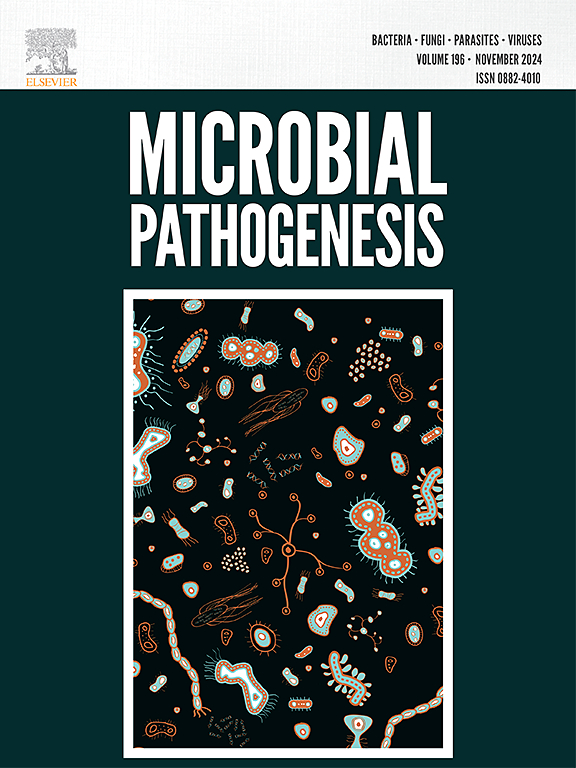肺炎链球菌病原体检测及疫苗设计策略
IF 3.5
3区 医学
Q3 IMMUNOLOGY
引用次数: 0
摘要
肺炎链球菌,通常被称为肺炎链球菌,在许多传染病中起着关键作用,特别是针对呼吸系统疾病,如大叶性肺炎、支气管炎和胸膜炎。这种细菌是儿童细菌性肺炎的主要原因,也是3个月以上儿童细菌性脑膜炎的主要病原体。此外,肺炎链球菌是儿童死亡率的重要原因,据世界卫生组织报告,全球每年约有100万5岁以下儿童死亡。这些感染对公共卫生构成严重威胁,正在成为全世界最关注的问题。尽管广泛使用了肺炎球菌疫苗,如多糖和结合形式,但这些疫苗的范围有限以及非疫苗血清型的增加需要制定新的预防策略。耐药肺炎链球菌菌株的升级使这一问题进一步复杂化,降低了传统抗生素的有效性,并增加了警惕监测和创造优质疫苗的必要性。本文详细综述了肺炎链球菌监测和疫苗开发的进展。它对现有的病原体检测方法和疫苗开发技术进行了详细的比较评估,审查了它们的优点和缺点。此外,该研究还深入探讨了肺炎球菌疫苗研究的不断变化的挑战和未来的方向,为加强对病原体监测和疫苗创新的理解提供了重要的参考。本文章由计算机程序翻译,如有差异,请以英文原文为准。

Detection of pathogens and vaccine design strategies for Streptococcus pneumoniae
Streptococcus pneumoniae, often referred to as S. pneumoniae, plays a critical role in numerous infectious conditions, notably targeting the respiratory system with diseases such as lobar pneumonia, bronchitis, and pleurisy. This bacterium is the predominant cause of bacterial pneumonia in children and a major agent of bacterial meningitis in those over three months of age. Moreover, S. pneumoniae accounts for significant childhood mortality, with approximately one million deaths each year among children younger than five globally, as reported by the World Health Organization. These infections pose a severe threat to public health and are becoming a paramount concern worldwide. Despite extensive utilization of pneumococcal vaccines, such as polysaccharide and conjugate forms, the limited spectrum of these vaccines and the rise of non-vaccine serotypes necessitate the development of novel preventive strategies. The escalation of drug-resistant S. pneumoniae strains further complicates this issue, diminishing the effectiveness of traditional antibiotics and amplifying the need for vigilant monitoring and the creation of superior vaccines. This article meticulously reviews progress in the surveillance and vaccine development for S. pneumoniae. It provides a detailed comparative assessment of existing pathogen detection methods and vaccine development techniques, examining their advantages and shortcomings. Additionally, the study delves into the evolving challenges and future directions in pneumococcal vaccine research, offering essential references that enhance understanding of both pathogen surveillance and vaccine innovation.
求助全文
通过发布文献求助,成功后即可免费获取论文全文。
去求助
来源期刊

Microbial pathogenesis
医学-免疫学
CiteScore
7.40
自引率
2.60%
发文量
472
审稿时长
56 days
期刊介绍:
Microbial Pathogenesis publishes original contributions and reviews about the molecular and cellular mechanisms of infectious diseases. It covers microbiology, host-pathogen interaction and immunology related to infectious agents, including bacteria, fungi, viruses and protozoa. It also accepts papers in the field of clinical microbiology, with the exception of case reports.
Research Areas Include:
-Pathogenesis
-Virulence factors
-Host susceptibility or resistance
-Immune mechanisms
-Identification, cloning and sequencing of relevant genes
-Genetic studies
-Viruses, prokaryotic organisms and protozoa
-Microbiota
-Systems biology related to infectious diseases
-Targets for vaccine design (pre-clinical studies)
 求助内容:
求助内容: 应助结果提醒方式:
应助结果提醒方式:


